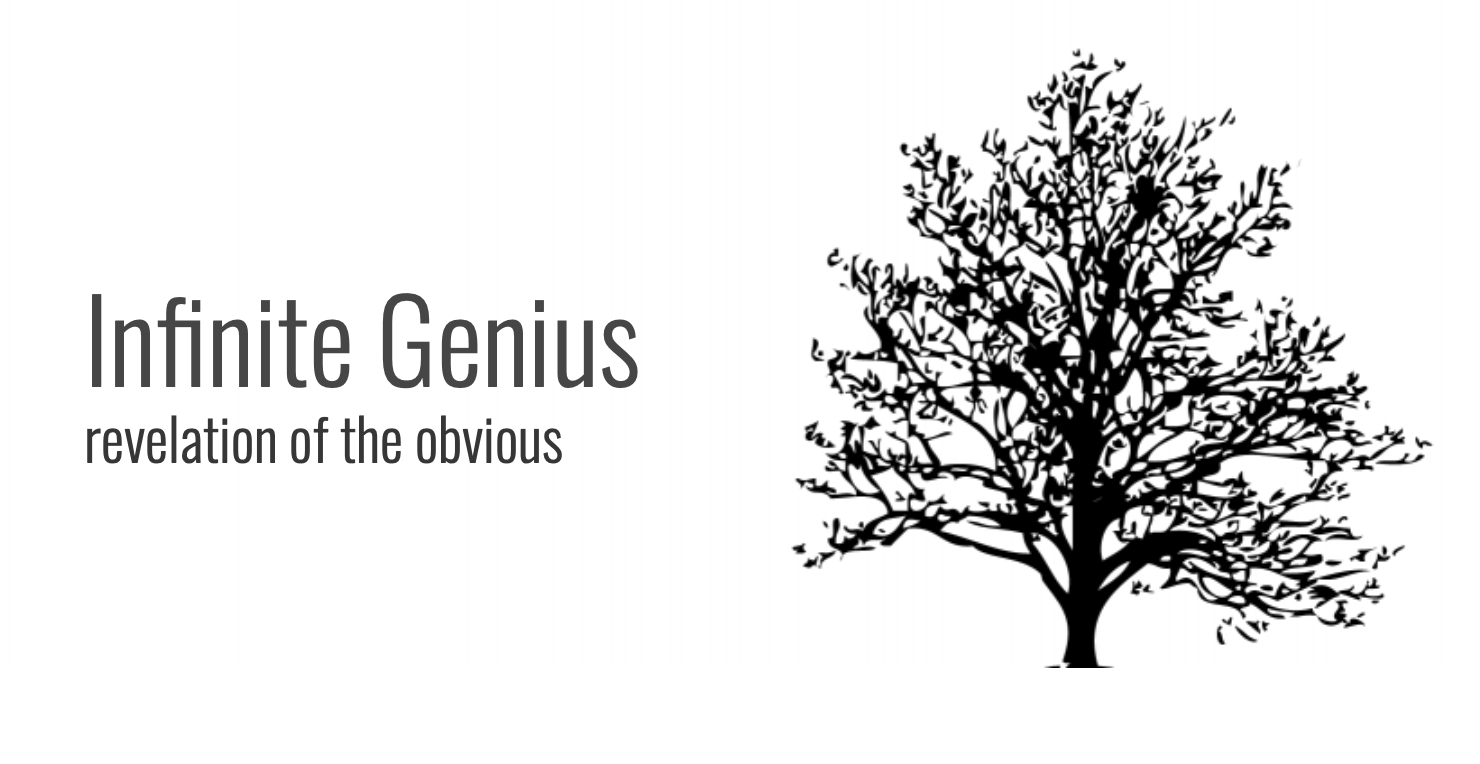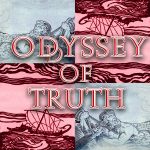Musicalizing Existence – the Scalar Musician
a 5th Density Approach to the Study and Practice of Music
III. the Enneagram, Vortex Math, and Music

The Enneagram: the Law of Octaves
So let’s take a look now at the Enneagram. This symbol came more into public awareness through the spiritual master George Gurdjieff, and then more recently has become popularized as a system of 9 personality types. I myself studied that form of the Enneagram of personality types, or ego-fixations, for many years in the Ridhwan School of A.H. Almaas.
As interesting as that is, I find it amazing that in the whole time i was studying the Enneagram in the school, or in any of the many books i read about it, never once did i see mention of how the number pattern was arrived at: 142857, nor what the 3,6,9 triangle is about as well. And well, it was never really explained what the numbers themselves had to do with ego fixations.
As it turns out, the 142857 pattern happens when you divide 1, or any other monomial, by 7.
So, 1/7 = 0.142857142857142857142857142857142857……
And we can see that every time we divide the next higher number by 7, the pattern just shifts to a different position, but still keeps repeating. This we could call “number as a wave”. It is irrational, i.e., goes on forever after the decimal point, but also it contains this repeating pattern. This quality of permutation is a key element in the creation of music.

So, it is a way to make infinity finite.
I’d say that’s as good a definition of music as any !
Originally, Gurdjieff associated the Enneagram with what he called the Law of Octaves, which is why i feel that it is a very important part of the esoteric study of music. How octaves work is key to understanding how growth happens, how life proceeds, and how we can begin to be ‘at cause’ rather than ‘at effect’.
OK, so one more little detail. If it is the Law of OCTaves, why do we divide by 7, and not 8? Because the divisions happen at the space between the notes, not on the notes themselves. So if we count the spaces between the notes in an 8 note octave, C to C, for example, we find there are 7 spaces.
https://en.wikipedia.org/wiki/Fourth_Way_enneagram
The Law of Three
As well as the Law of Octaves, Gurdjieff also taught about the Law of Three. This Law pertains very much to the 3 6 9 triangle in the Enneagram. Here we revisit his quote from above:
The Law of Three holds that three forces act on any event, which can be called Active, Passive, and Neutralizing forces, or simply First, Second, and Third forces respectively. These three forces can appear in any order, 123 for example or 312, giving 6 possible “triads” of forces describing 6 very broad types of event.[14] Humanity is said to be “third force blind”, to have difficulty recognizing the third force, which may appear to us in the guise of a result or of a background environment. “People cannot perceive the third force directly any more than they can spatially perceive the ‘fourth dimension’” Gurdjieff is quoted as saying.[15] In terms of the Law of Seven one of the three forces appears as the “do” of the octave and the other two appear as the “shocks” (which also function as the do of new octaves).
https://natcath.org/NCR_Online/documents/ennea2.htm
This diagram shows how Gurdjieff arranged the tones around the enneagram. Notice the ‘X’ at 3 and 6. He says that those points are the half steps in the scale, where a “shock” is introduced, that changes the direction.

the Spiralization of the Octave
As he says that the octave is how all growth and change manifests, these “shock” points are important to keep things progressing in a kind of spiral way. They help change the course from being just a straight line, which is not natural, you don’t find straight lines in any natural form of growth.
this link explains it in more detail, if you can decipher the meaning: https://gurdjieff.work/ae/terms/en50/0705.htm
In the major scale, key of C, we find the half steps between 3 and 4, and 7 and 8, or between E and F, and B and C.

So we see that the tritone in the major scale, i.e. F and B, are there at those half step points. Therefore, i submit, that the tritone, or diminished 5th/augmented 4th interval, is in fact the “lever” or “spring” in the octave, which brings about the necessary changes to keep the music flowing and growing. Because the tritone is the salient feature in the dominant 7th chord, for example, we always find it in situations that require resolution. Therefore any kind of modulation to a new key, which in life can symbolize change into new territory (like moving to a new place, or finding a new work situation), any new growth, involves the tritone, as we use dominant 7 chords to ‘set up’ the new key.
We could even say the tritone “spiralizes” the octave.
see my Tritone article: The Charm of Impossibilities 2 : Sympathy for the Devil’s Interval
Tones are Centers of Gravity
In the book “Beelzebub’s Tales to his Grandson” Gurdjieff invented a lot of new words, one of which is the word ‘Stopinder’, which as far as i can tell, refers to a tone as a center of gravity. For me this is a key to help deepen my understanding of what tones are. As we know that the centripetal force at the center of the toroidal field IS actually a center of gravity (blissful, magnetic, still), we can deduce that each tone in itself has the potential to be a toroidal field. As such, it has a magnetic field. Now we can imagine the toroidal fields of two or more tones interacting, creating a kaleidoscopic array of frequency relationships as a kind of fractal geometry. These interference patterns ARE music.
“This sacred primordial cosmic law has seven deflections or, as it is still otherwise said, seven ‘centers of gravity’ and the distance between each two of these deflections or ‘centers of gravity’ is called a ‘Stopinder-of-the-sacred-Heptaparaparshinokh.’ “This law, passing through everything newly arising and everything existing, always makes its completing processes with its seven Stopinders.
However, we find some contradictions in this material. Here’s one: “There are two definitions for Stopinder, either the ‘gravity center’ or ‘distance between deflections’ and this has hopelessly confused the reader and even Gurdjieff“.
https://www.gurdjieff.justwizard.com/FoodEnigma.html
Notes vs. Tones
So it becomes clear that notes and tones are two very different things. The way i see it, notes are the equivalent of particles, and tones are the equivalent of waves. Notes are the dots on the page, tones are the music.
If we consider a guitar string, for example, we place our finger on the part of the string that doesn’t vibrate, which is like a node of stillness. But the tone is created by the rest of the string vibrating. They work together. So the note is really the ‘node’, the place where the wave goes to zero, and crosses the center line. This is the point of silence, or the fulcrum which makes the tone possible.
And the tone is the vibrating string, the wave itself. But a living tone is not always created when a note is played. This will depend entirely on the musician, and to some extent the instrument. The art of tone creation on an acoustic instrument is a dying art. It requires deep listening, silence, and centeredness in one’s Divinity. Your ‘tone’ on your instrument will reflect perfectly the depth of your self understanding.
But for now let’s just stay with the idea that each tone has a kind of dimensionality to it, and that tones have many mysterious and subtle connections, that are magnetic in nature.
But, as not all enneagrams have the 3/6/9, we can also deduce that not all tones carry a resonant toroidal field. Thus, i would argue that the toroidal field of the musician needs to be active, for the tones to have their toroidal field active. The difference is subtle, but powerful. I do understand that many will not want to take the time to develop a singing living tone, as most audiences cannot tell the difference, one is tempted to say ‘why bother?’ But let’s not get complacent.
the Missing ‘Stopinder’ (center of gravity) in Gurdjieff’s Enneagram
Continuing on to another contradiction, let’s notice how, in Gurdjieff’s model of how to place the tones around the Enneagram, there is a problem with associating the half steps with 3 and 6. Can you see it?
from an article by Dylan Stephens:
The question then arises as to whether 5 (the fifth note sol) ‘Piandjoehary’ should also be moved up, but in BT pg.790 it is clearly linked to (4) ‘fa’ ‘Tetartoehary’ (which has the prefix root meaning 4.) Thus it is clear that the substance at ‘la’ is missing! As to why Gurdjieff made this mistake, I believe is because no one dared to question it, due to his status as “infallible leader”. As we shall see, the Food Octave that he presented to Ouspensky does not have that error. Ouspensky, who the closest to being his peer, would have pointed this out, but perhaps he was never given a copy or threw it in the trash. Why Orage did not catch it, when he translated, is a mystery. I suppose someone might say that Gurdjieff made this error to make us think, but this book is his legacy, so it needed to be correct. Others like John Bennett have just accepted that that ‘Exioehary’ is meant to remain at (6) (“Talk’s on Beelzebub’s Tales, p. 99”).
In the diagram above we find the half steps between 3 and 4 (or mi, and fa…as it should be) and between 5 and 6 (or sol and la), which does not correspond to the major scale, or any of the commonly used modes, like Dorian, Phrygian, Lydian, etc.
One Possible Solution: Melodic Minor
To make a scale that would fit that, with ‘do’ at the 9 point on the enneagram, we would have to make a scale which is major on the bottom tetrachord (4 note scale grouping), and minor on the top tetrachord.
This is a beautiful scale, but it is not commonly used.
C D E F G Ab Bb C
This is actually one of the modes derived from melodic minor. In this particular instance it is F melodic minor, but starting and ending on C, the 5th.

this link demonstrates the error in the Gurdjieff octave, i.e. that the half step at ‘si’ (or ti) does not happen in the right place.
https://www.gurdjieff.justwizard.com/Enneagram.html
I do find the idea that this scale is BOTH major and minor intriguing, so i offer it as one possible solution to the problem. But i also offer another more interesting one as well.
If one researches this topic online, they will find an unbelievable amount of arcane information about the enneagram, that only the most diehard esotericist would want to decipher. There are SO many different interpretations of what the enneagram stands for that in can be bewildering and confusing. And Gurdjieff’s own writing in Beelzebub’s Tales, is very obscure. Let’s not get too lost in the details, as we run the risk of losing the forest for the trees.
What interests me most is simply the number pattern and how it is derived from dividing any monomial by 7, and the idea that it is a symbolic representation of the toroidal field. Also it is fascinating how the enneagram shows the link between the toroidal field, octaves, scales, and music in general. I have an alternate interpretation of it, that i will present here, although i do not claim it to be anything other than another possibility. Feel free to discard it if you don’t find it relevant.
my Enneagram/music interpretation
I would like to offer a different way of putting the musical tones with the Enneagram, that solves the problem of the ‘si’ being in the ‘wrong’ position.
Firstly, Gurdjieff says the 9 at the top represents Do. I submit that the 9 is actually silence, the Divine, beyond time, beyond manifestation. 9 always turns into itself when doubled and reduced to a monomial. It is Self-Existing, as is the Divine. it is outside the octave, and is the last monomial (single number).
Also whenever we add numbers together, to reduce them to a monomial, we can just cancel 9s out. (For example: 679. 6+7+9 = 22. 2+2 = 4. But also 6+7 = 13, and 1+3 = 4.) So the 9 actually equals zero in this type of number reduction.

Then 1 through 8 are the octave, 1 being D and 8 being D as well. And the tritone, which is what occurs at the half-step points in the octave, are actually the 3 and 6. This means we can use the Dorian scale, or C major starting on D, and then everything fits.
In Gurdjieff’s version, why are some of the points on the enneagram tones, but 3 and 6 are spaces between tones? To me, that feels like a flawed understanding. Even Gurdjieff himself admitted that he didn’t know everything about the enneagram. And he was not really a musician. That is, as far as i can tell, he never studied music formally. Thomas De Hartmann, who composed the music with Gurdjieff, did study music, gave up a promising musical career to be with Gurdjieff, and apparently did all the compositional ‘heavy lifting’, while Gurdjieff whistled the melodies to him. Does that make Gurdjieff a musician?
remember the Dylan Stephens quote above: “….it is clear that the substance at ‘la’ is missing! As to why Gurdjieff made this mistake, I believe is because no one dared to question it, due to his status as “infallible leader”.
As you may know, i’m a firm believer in questioning literally everything, especially ‘infallible leaders’ ! These great beings who came before us have all had their failings, but also have brought amazing gifts to us. It’s up to us to sort it out.
And as for the 1 and the 8 being the same note in the version i suggest, that’s the octave. After all, it IS “the law of octaves”, and OCT means 8. So i submit, we need both of those tones.
Also, an interesting side note: All intervals can be inverted. A unison (1) becomes an octave (8) . 2ds inverted become 7ths. 3rds inverted become 6ths. and 4ths inverted become 5ths. This basically creates three groups of intervals, besides the unison/octave. But notice how each pair adds up to 9. 1+8, 2+7, 3+6, 4+5. So in this arrangement of tones around the enneagram, we can see these pairs on opposite sides.
It’s a bird, it’s a plane, it’s Supertonic
Note that D is called the “Supertonic”. could it be, that the supertonic IS actually the ‘supertonal center’ of the octave, rather than C ? Sort of like Superman.
The Supertonic is the second scale degree. But it is also, an octave higher, a fifth above the fifth, which is actually the 9th. There’s nine again. And, the 9 is actually outside of the confines of the octave, so just as in the Enneagram, the 9 represents the Divine, outside the “framework” (or octave) of the manifest reality, so too we could think of the 9, i.e. the supertonic, as the exact same thing.
Since the fifth is the ‘dominant’ force in a key (see my tritone article, the chess analogy), then we could say the fifth of the fifth, or supertonic, is like the Higher Power, Divine Guidance, by which the King (the fifth) is advised and guided.
Re (the Supertonic) as the symmetrical center of the Octave
Using this model of the Enneagram, we can think of the Supertonic , or RE, as the symmetrical center of the octave, and if we imagine ’emanations’ coming from this center, then the first diatonic emanation would be to C and E. So we could say that the tonic is the first emanation of the supertonic. And the next diatonic emanation would be the tritone, B and F. I find it interesting that these two tones are the functional part of the dominant 7th chord, i.e. the tritone.
Think about it: why is the Major scale the ‘go to’ scale always? Couldn’t it just as well be the Dorian? The ‘major’ always strikes me as a bit military, with the tritone forced into the position of ‘the bad guy’, the revolutionary, the one who is always unresolved, bringer of tension, when he is the bringer of change and creation.
In the Dorian, that is not so. The tritone is the 3rd and the 6th. Just a thought. The jury is still out on this one, this issue of how to place the notes into the Enneagram. So let’s not get too hung up on it, as it will reveal its secrets over time to those who study it.
about the Dorian mode:
“First Ehul voice or voice I Doric begins rising on PA (D) brings in the human’s soul the feeling of glorifying God. This is the voice that defines the music in the category of arts, because, as St.Ioan Damaschin said: “Of all (voices) you have the first victory.”The first voice brings the hope of salvation to humans, because it creates a sense of strength and of steadiness, is full of optimism and melodiously.” – Psaltic Modes – Meanings and Symbolics
Exploring Symmetry in Music
I think this points to the importance of symmetry in music, as symmetry implies balance, which brings one to the central channel, and thus to states of transcendence. Middle C is clearly not in a symmetrical position, and yet ‘middle C’ is one of the cornerstones of modern music theory. And, it is not at the middle of the piano. So why don’t we orient ourselves around ‘middle D’, then? At least it’s position is symmetrical, as is that of A flat.
But we will find more and more examples of symmetry in music, once we start to look for them. Like, for example all polyrhythms, which are all palindromes, therefore symmetrical. We will explore these in depth in the section on Fractal Rhythm Theory. And we will find that practicing these will help us in a myriad of ways, to imbue our music with a more transcendent quality. The great French composer Olivier Messaien referred to this as ‘the Charm of Impossibilities’.
the Three Tonal Areas and the Law of Three
As the Dorian scale is built on the iim (two minor) chord, it falls in the subdominant tonal area. The three tonal areas are tonic, subdominant, and dominant. I hear the subdominant tonal area as being the balance between the extremes of tonic and dominant. So the Supertonic, would be a different kind of ‘stability’ than the tonic. More balanced, in between, like the third Force. Perhaps even a portal to a higher tonality. Certainly the first step into a new octave.
Going back to Gurdjieff’s Law of Three, the subdominant tonal area (which includes the IV and the ii) would coincide with the Neutralizing Force, which is the one he suggested people usually cannot perceive directly. So perhaps we just cannot yet hear how the Supertonic is actually the symmetrical center of the diatonic scale.
Vortex Math

Now let’s look into a similar and fascinating subject, that of Vortex Math. This is the mathematics of the vortex, or of the toroidal field, or torus. Since our Light Body is synonymous with our toroidal field, my take is that vortex math is an essential component in the process of creativity, especially music.
We immediately notice a similarity in the above diagram, to that of the enneagram. Both have the 3, 6, and 9, both have all the monomials up to 9. The only difference is the pattern of the lines in the center. In this case the numbers follow this sequence: 1, 2, 4, 8, 7, 5.
Remember that the enneagram has the pattern: 1, 4, 2, 8, 5, 7. So we see here that the 4 and the 2 change places, and the 5 and the 7 as well. But isn’t it interesting that both contain the same numbers, although they are arrived at in two completely different ways, one by dividing by 7, and the other by doubling.
Vortex Math was discovered by Marko Rodin, who has become a kind of underground folk hero for it among free energy enthusiasts. He is an eccentric and brilliant character, and the whole premise is fascinating.
The number sequence of vortex math is derived simply from doubling. So, it starts on 1, then 2×1= 2, then then 2×2 = 4, then 2×4 = 8, then 2×8 = 16 which equals 7 when we add 1 + 6, and then 2×7 = 14, which becomes 5 when we add 1+4. Then 2×5 = 10, which equals 1 when we add 1 + 0. So we are back at the start. We then see the whole sequence, 124875.
So as we look at this sequence on the diagram we see that it makes a kind of rough figure 8 pattern, or the infinity symbol. And it crosses the center line at zero, which is directly below the 9.
This animated gif shows very simply, the difference between the enneagram, and the vortex math diagram:

Notice the difference of where the center line is crossed in each diagram. In the enneagram, it happens more near the top, and in the vortex math diagram, it happens lower. More about that later. And notice it is really just the switching of the positions of 1 and 8, i.e. it is inverting the octave.
the Enneagram IS the Torus
We haven’t even scratched the surface of this fascinating topic here.
“The Enneagram is identical to each of the following:
a) The Symbol of Enlightenment
b) The antithesis Nexus Key
c) Dividing by Seven
d) The Doubling Circuits
e) The Abha Torus “
this link will send you down a fascinating rabbit hole about this whole topic: http://vfedtec.com/doc/rodin/
Become a Superconductor
Many people are attempting to make Rodin Coils, which are actual physical versions of the torus, designed to be free energy generators. re the Rodin Coil, and therefore, the torus:
“It is a room-temperature superconductor; electricity passes through it without resistance because the pathway made for it by the wires keeps it from interfering with itself. “
So when our toroidal field activates, we become a ‘superconductor’, able to process vast amounts of energy with zero resistance.
And, it is also interesting to note, that quantum computers require superconductivity to function. Up to now, superconductivity has been achieved by the use of extremely low temperatures. But if it is true that a Rodin Coil is a room temperature superconductor, this may revolutionize the whole field of quantum computing.
Magnetic Monopole
“It (the Rodin Coil) also has already been demonstrated to form a magnetic monopole (i.e.: magnetizing a bar of iron with only one magnetic polarity). “
Refer again to Walter Russell’s magnet, which has PLUS (+) ‘North’ at both ends, and the still magnetic Light of Knowing ‘South’ at the center.

Also the magnetic monopole is a central element of Human Design, which said to be in each one of us in the G Center at the heart, i.e. the God center, and it is in fact, the driver of your ‘vehicle’. My feeling is that the magnetic monopole and the tai ji pole are one and the same.
This in itself is another huge topic, the Magnetic Monopole of Human Design. This link is a brief introduction:
https://www.jovianarchive.com/Stories/110/The_Magnetic_Monopole_and_Human_Design
the Pulse of Life and Music
This animation shows Vortex Math in action:

Notice in this animation how the energy moves around the “figure 8” (infinity symbol) pattern of 124875.
It crosses the center line twice, once going and once coming.
We can also see in the diagram that the energy flows in the opposite direction simultaneously. This ties in with this whole idea of alternating current. This is not a one-way phenomenon.
One other thing worth noting is how much this resembles the heartbeat, and the circulation of blood in the body. In other words, the pulse.
New Definition of ‘Swing’
So I believe this contains the key for the ‘pulse’ of music, or the ‘groove’ or ‘swing’: passing continuum. Because it is the exchange of energy between 3 and 6, the more subtle energy passed back and forth between the hands (see next section), that energizes, and is energized by, (it is a regeneration circuit) this ‘pulse’ in the body, both in the enneagram and the vortex math versions. This passing of continuum charges the center line with energy every time it crosses it, and this passing of continuum provides the dynamic pulse, the momentum of the music. And the 9 at the top is intimately involved as the symmetrical and transcendent center of the entire process.
We can imagine a swinging pendulum, crossing the center line each time. But it can be a narrow swing, or a very wide one, while keeping the same tempo. So when we are ‘swinging hard’, the pendulum has more amplitude, even within the same tempo. And i am not referring to a jazz kind of swing necessarily. Even ‘straight 8ths’ can swing. It all depends on the amplitude of the wave.
This diagram from Walter Russell points to this process.

The 3 and 6 are the pulsation of Magnetism and the 1-2-4-8-7-5 is the flow of Electricity.
So, for the reverse current, instead of doubling the number, we halve it. But the same pattern occurs.
half of 1 = .5.
half of .5 = .25, 2+5 = 7.
half of .25 = .125. 1+2+5 = 8.
half of .125 = .0625. 6+2+5 = 13, 1+3 = 4.
half of .0625 = .03125. 3+1+2+5 = 11, 1+1 =2.
half of .03125 = .015625. 1+5+6+2+5 = 19, 1+9 = 10, 1+0 = 1.
And we’re back to the beginning. And we can see that the resultant numbers are the same pattern, but in reverse: 578421
And, another little bonus is that these numbers, (all of the numbers except 3,6,9) when all added up and reduced to a monomial, also equal 9.
Now, it’s important to understand that this is just a two dimensional representation of a much more complex and fascinating process, as the toroidal field, or vortex, is multi dimensional. If this interests you, i recommend checking out Marko Rodin’s explanation online. Although he is the one who discovered it, he has not made all that much material to study, because he is very much against trying to profit from it, or patent it, as it is about free energy, and that means ethically it has to be literally free for all who want to use it. As a result it is ‘open source’, and there are many people experimenting with Vortex Math, and attempting to build free energy devices such as the ‘Rodin Coil”.
But we can see in some images the patterns that occur on the surface of a torus, and how the 124875 pattern interacts with the 369 triangle. Note how the 3s, 6s, and 9s are all in the same rows, as are the 124875 sequences. And notice too, how the 369 rows are always the palindromic form of 396 693 396 693 etc.

Let’s also notice how both the enneagram, and the vortex math have the 369 triangle. We hear fairly frequently these days the famous quote from Nikola Tesla : “If you only knew the magnificence of the 3, 6, and 9, you would have the key to the universe.”
Musicalizing Existence – the Scalar Musician -I : the Sacred Anatomy of Creation
Musicalizing Existence – the Scalar Musician -II. the Sacred Anatomy of Creation
Musicalizing Existence – the Scalar Musician -III. the Enneagram, Vortex Math, and Music
Coming soon:
Part II : Fractal Rhythm Theory
Part III : Holographic Harmony
Part IV: inSpiral Melodics
©2021 Kit Walker all rights reserved. Please do not reproduce any part of this article without written permission. Linking OK with credits..
many thanks to the creators of the art and photos. Happy to credit or remove at the author’s request.
– Come Like Us on Facebook – Check us out on Instagram –
– Sign Up for our Newsletter –
Subscribe to our New NOW Youtube Channel



 kitwalkermusic.wordpress.com
kitwalkermusic.wordpress.com








